
•
•
•
•
By Lilace Mellin Guignard

By David O’Reilly
Gayle Morrow


By Ann E. Duckett
By Lilace Mellin Guignard



•
•
•
•
By Lilace Mellin Guignard

By David O’Reilly
Gayle Morrow


By Ann E. Duckett
By Lilace Mellin Guignard

Helping people buy houses in communities we call home. For 150+ years, C&N has helped individuals and families to purchase a home. Today, we continue to offer great rates, same-day prequalification, low/no down payment options and the personalized service you expect from C&N.

mountainhomemag.com
E ditors & P ublish E rs
Teresa Banik Capuzzo
Michael Capuzzo
A ssoci A t E E ditor & P ublish E r
Lilace Mellin Guignard
A ssoci A t E P ublish E r
George Bochetto, Esq.
A rt d ir E ctor
Wade Spencer
M A n A ging E ditor
Gayle Morrow
s A l E s r EP r E s E nt A tiv E
Shelly Moore
c ircul A tion d ir E ctor
Michael Banik
A ccounting
Amy Packard
c ov E r d E sign
Wade Spencer
c ontributing W rit E rs
Anne Lugg Alexander, Maggie Barnes, Ann E. Duckett, David Higgins, David O’Reilly, Karey Solomon, Gary B. Xavier
c ontributing P hotogr AP h E rs
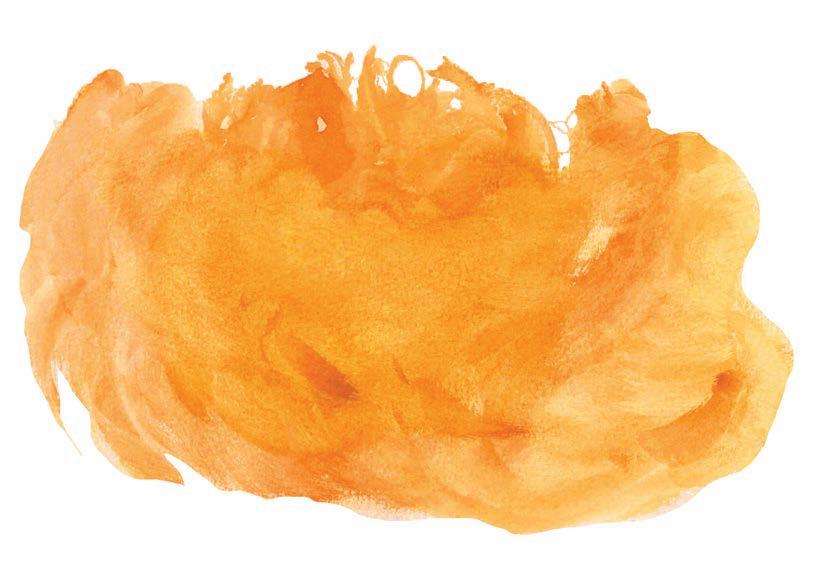
Tim Coleman, Lauryn Gasaway, Joe Gassner, Raymond Kulpinski, Christine Moore, Karey Solomon, Carol Sulla, Marnie Toothaker, Sarah Wagaman, Curt Weinhold, Gary B. Xavier


by Ma Cox








d istribution t EAM
Amy Woodbury, Grapevine Distribution, Linda Roller
t h E b EA gl E Nano Cosmo (1996-2014) • Yogi (2004-2018)
ABOUT US: Mountain Home is the award-winning regional magazine of PA and NY with more than 100,000 readers. The magazine has been published monthly, since 2005, by Beagle Media, LLC, 39 Water Street, Wellsboro, Pennsylvania, 16901, online at mountainhomemag.com or at issuu.com/mountainhome. Copyright © 2024 Beagle Media, LLC. All rights reserved. E-mail story ideas to editorial@ mountainhomemag.com, or call (570) 724-3838.
TO ADVERTISE: E-mail info@mountainhomemag.com, or call us at (570) 724-3838.
AWARDS: Mountain Home has won over 100 international and statewide journalism awards from the International Regional Magazine Association and the Pennsylvania NewsMedia Association for excellence in writing, photography, and design.
DISTRIBUTION: Mountain Home is available “Free as the Wind” at hundreds of locations in Tioga, Potter, Bradford, Lycoming, Union, and Clinton counties in PA and Steuben, Chemung, Schuyler, Yates, Seneca, Tioga, and Ontario counties in NY.
SUBSCRIPTIONS: For a one-year subscription (12 issues), send $24.95, payable to Beagle Media LLC, 39 Water Street, Wellsboro, PA 16901 or visit mountainhomemag.com..




They call it the sport of kings, and its crowning moment comes each May when 150,000 spectators pour into Churchill Downs racetrack in Louisville for two of the thrillingest, heart-poundingest minutes in all of sports. And wow. This year’s Run for the Roses was a classic. In a rousing comefrom-behind photo finish, long-shot Mystik Dan edged out Forever Young and Sierra Leone to win the 150th Kentucky Derby. “A dream come true,” co-owner Sharilyn Gasaway exclaimed as she and her husband, Lance, hoisted the solid gold Derby trophy.
But the world’s most famous horse race is much more than a gallop around a track. It’s a see-and-be-seen social extravaganza that’s become the nation’s grandest festival of hats. Big hats. Playful hats. Happy, flamboyant, look-at-me hats. And as the Gasaways pumped their fists May 4 and kissed their heirloom trophy, Wellsboro’s own Christine Moore watched in delight from her seat on the track’s first turn. She had good reason to smile. The go-to-hatmaker, or “featured milliner,” for nearly all of America’s prestige horse races, Christine, fifty-eight, had once again “won” the Kentucky Derby. That broad, black hat Sharilyn was wearing in the winner’s circle was Christine’s creation. Bold yet understated, woven of fine sisal straw, it featured a grand silk bow displaying the Gasaway stable’s black and emerald-green racing colors.


By David O’Reilly


Not all magic hats are black: At the Derby with her husband, Vasily, Eleni Hapsis models her hat made by Christine (top); Christine Moore amongst a fairy ring of her hats in the woods of Wellsboro; Patrice White parades her 150-rose hat, which Christine made for the 150th anniversary of the Derby.
Even before “the most exciting two minutes in sports” pounded around the track, five-time Grammy winning country star Wynonna Judd welcomed a global audience of millions on NBC and many other outlets to Churchill Downs by singing the national anthem—while wearing an oversized top hat designed and made by Christine. Earlier on Derby Day, Christine awakened to a big story in Vogue magazine that described her hats as “iconic,” and three days before the race, the New York Times had lavishly featured Christine in its online sports section, the Athletic, with the headline, “The woman behind the Kentucky Derby’s most coveted hats.”
Accolades are nice, but the biggest payoff for Christine on race day was simply to look around. With a turn of her head, she could spot many of her creations. Bobbing through the infield, dotting the grandstand, lighting up the Turf Club and gazing down from Millionaires’ Row were thousands of her elegant silk creations, the royalty amongst so many aspirational hats: elegant bursts of coral reds, indigo blues, cotton candy fuchsias, dusky roses, and daffodil yellows, showing off like fireflies and conferring joy on Derby spectators eager to be part of the scene.
People like Eleni Hapsis of Huntington Valley, California. Yes, the woman there in the grandstand wearing that big pink hat with the great big flower.
“What’s the purpose of going through life if you can’t enjoy moments like this?” Eleni had asked with a laugh weeks earlier. The Kentucky Derby “has always been on my bucket list,” the retired physical therapist explains over the phone. And when her husband, Vasily, surprised her with tickets under the Christmas tree, “I couldn’t believe it.”
Only later did she discover what a fashion scene Derby Day is. Especially the hats. “I had no idea where to go, so I started with [an online] search for ‘Kentucky Derby hats,’” she recalls. “Christine’s name didn’t come up right away, but as I started to compare pieces on various websites, I noticed hers were much more elevated than the others.
“All were pretty,” Eleni continues, “but something about her work made them more personable. When you saw her style, it felt like it was a passion for her.”

She gulped when she saw the prices: about $1,100 for a grand, floral Derby hat; about half that for the slighter, more delicate “fascinators.” But her family owns a successful Los Angeles meat wholesaling firm, “and we had a budget. I said let’s go for both. This is a once-in-a-lifetime thing.”
Even before the 150th race, Christine was already as much a part of the Kentucky Derby as bourbon and mint juleps. She and her hats have been featured more than two dozen times on NBC and Fox. NBC Today Show weatherman Al Roker and Fox News weather woman Janice Dean both wear her hats, as do celebrities like Jennifer Lopez and Katy Perry. (Al’s hats come from Christine’s Blake Collection of men’s hats, named for her husband, Blake Seidel.) And so do folks in rural northcentral Pennsylvania, where the couple has a home in Wellsboro.
While she and Blake have another home in New York City,
she’s especially passionate about contributing to the Wellsboro area. She has a year-round window at Dunham’s Department Store, where she not only puts on regular trunk shows but offers an affordable selection of her caps and hats. She recently designed a new cape for the queen of the Pennsylvania Laurel Festival, and with her formidable knowledge of fashion history she co-hosts and judges the Victorian costume contest at Wellsboro’s Dickens Festival. You don’t need to visit Churchill Downs to see what the fuss is about. To mark the Derby’s sesquicentennial, the Gmeiner Art & Cultural Center in Wellsboro is hosting a show of Christine’s hats and design sketches from July 13 through August 4 (see gmeinerartculturalcenter.org).
Tall, dark-haired, and endlessly energetic, Christine rides her bicycle just about everywhere, including the seven miles between her family’s camp near Hills Creek Lake and her home on West Avenue. When she’s not sketching a design at her breakfast table, she’s probably out in her garage studio making hats or on the phone with employees, vendors, and clients.
Christine’s leather beret and black knee boots might say “city” to some, but she grew up “farm girl” on six acres in the far northern suburbs of Philadelphia. “I went to school, came home, did chores, and played softball,” she says, sitting with Blake by their fireplace. Apart from high school theater, “there was nothing fun about it.”
Where she did find delight and inspiration as a child was at her family’s wooded, hundred-acre camp outside Wellsboro. Her mother, Carolyn, a social worker and artist who died in 2016, had named it Vert Dais, French for “green canopy,” and there Christine would gaze with wonder on “the beaver ponds, little streams, mushrooms, deer, bears, snapping turtles. I would look up at leaves against the sky, at how the negative space between them looked like lace or formed this flow. Or I’d see these bunches of little mushrooms on a log and observe the different shades of light and dark.”
Her abiding love of flowers, which figure so prominently in her creations, likewise began at Vert Dais, which her engineer father, Bill, still owns. “I would look at Mom’s flowers and think, ‘If only I could make those, I could mirror God’s creation.’”
Armed with a degree in costume design from Kutztown University, she landed a job at Philadelphia’s Walnut Street Theatre, where she met Blake, a theater manager. He went on to earn a master’s at Columbia and became managing director of Adelphi University’s Performing Arts Center. He now serves as their firm’s brand manager, doing everything from handling news media, social media, and business partnerships to making innovative hat stands, drawing on his experience as a set carpenter.
In 1990 Christine moved to New York to join Blake. There she worked with Broadway’s legendary milliner Rodney Gordon, making top hats for Phantom of the Opera and many more shows, before launching Christine A. Moore Millinery in 1994 (hence the website name camhats.com). Among the firm’s first clients was the luxury New York department store Henri Bendel.
Christine discovered her artistic vision when she attended her first Kentucky Derby in 2004 and saw what a “Derby Hat” was. “I realized if I designed wide brimmed over-the-top pieces with my addition of elegance, my creativity would have no bounds!” Three decades after starting her own firm she would find herself creating the most celebrated hat of this year’s Kentucky Derby: a nimbus
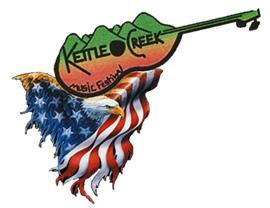







of 150 silk red roses floating atop a broad white brim trimmed in black. Christine “was making the roses on airplanes, in hotel rooms” even before she had a buyer. “It took me and my staff forty hours,” she says. There was talk of Miss America wearing it, but, two weeks before Derby Day, Louisville horsewoman Patrice White spied it at Rodes, the city’s toniest boutique, and pronounced it “perfect.” At $5,000 it was the priciest hat of the Derby. News photographers and camera crews followed Patrice everywhere. “Everything a southern girl could want in a hat,” Vogue magazine gushed.
“Her hats are just so feminine and ladylike. I can always spot them in the crowd,” says Patrice. She buys one every year for the Derby and typically lends out past years’ hats to family and friends. But she just might retire this year’s hat and offer it to the Churchill Downs Museum. “It was for the 150th anniversary,” she says. “It’s just too special to ever wear again.”
True, Christine’s the “featured milliner” for the Preakness, the Belmont Stakes, the Saratoga Race Course, and the Breeders’ Cup, to name a few. But she’s an endlessly inventive maker of all kinds of hats, including men’s, an artist who labors at her craft all day long, often starting at 5 a.m. “For me, it’s sculpture. Hats are wearable art,” she likes to say.
Hats at the 150th Kentucky Derby: (clockwise from left) Sharilyn Gasaway in her stable’s colors, praying on the phone with her brother before her horse won the trophy at Churchill Downs; Wynonna Judd singing the national anthem before the run for the roses; Christine and her husband Blake Seidel (in a Blake Collection fedora); Janice Dean, Fox News senior meteorologist, covering the Derby in a Camhat, as Christine’s hats are nicknamed.

She’s displayed her hats for years at Wellsboro’s annual Dickens of a Christmas Festival and Dunham’s Department Store offers some of her less detailed but no less stylish creations at prices ranging from $200 to $500—a relative bargain, possible because Christine cuts her prices 50 to 90 percent for her Wellsboro trunk shows.
“Guys will stop me on the street when I wear her hats,” says Wellsboro resident Sara Vogt. “She’ll put a hat on you, and you look fabulous.” A close friend of Christine’s, Sara owns about a dozen, and picks up one in a cloche style—a flat vertical crown on a narrow brim—to show how the ribbon around the brim turns into a realistic leaf.
“That’s what I love about Christine,” she says. “Her hats are never far from the way God made nature.” Sara’s mother so loved Christine’s hats, she says, that she was buried wearing one.
“I’m not super fashionable,” admits Amy DeCamp, a former longtime English teacher at Wellsboro Area High School, “but her hats make it easy to appear fashionable.” Amy bought her first one twenty years ago at a local shop, The Fifth Season, and now has about a dozen. Most are relatively affordable, everyday caps—“I wear them to the supermarket”—but she has two with broad, stylish brims for special occasions. She and her three young daughters even visited Christine’s workshop in Man-
hattan a few years ago, where, she recalls, they laughingly tried on hats topped with satin lobsters and strawberries. “They all looked so real,” she marvels.
Puttin’ on the Ritz
Christine and her five employees confect millinery magic out of a garment factory in midtown Manhattan, directly across West 34th Street from Macy’s flagship store. Her tenth-floor workshop is a riot of colorful fabrics in constant motion, vividly illuminated by bright fluorescent lights. The streets of New York were unusually quiet on Good Friday, but not so up here. Derby Day is always the first Saturday in May, and the Preakness and the Belmont Stakes would soon follow. She and her staff have hundreds of orders yet to fill for the many boutiques carrying her line, and for special order clients like Eleni. Her crew is working five days a week and will soon go to six. She’s already working seven.
“What are you doing next?” she asks Emily Zimmerman.
“I don’t know,” replies Emily, her production manager and fabric cutter. She shows Emily a photo of Eleni’s Derby dress—a floral print of mottled reds and pinks flecked with moss greens, mauves, and purplish blues. Emily then studies







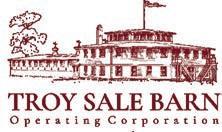



Christine’s sketch for the hat and her penciled notes.
“Queenie flowers. Backs are purple and blue with fronts in dress: coral and blue. Sheer horsehair. Parisisol.” Emily nods and reaches for a ring binder containing photos and specs for all their standard hat styles and flower shapes. “Our bible,” she explains.




Christine comes by with a domed, two-foot disc of parisisol straw. She’s already hand-dyed it fuchsia, a vibrant pink, but it’s still a blank waiting to be shaped and styled. All her employees can make a hat from start to finish, but Christine alone designs each one, and today she’s making Eleni’s.
She takes a seat at her high worktable and starts by pinning a cream-colored ribbon inside the crown. “It’s a sweatband,” she explains with a smile. “But my clients don’t sweat. They glisten.”





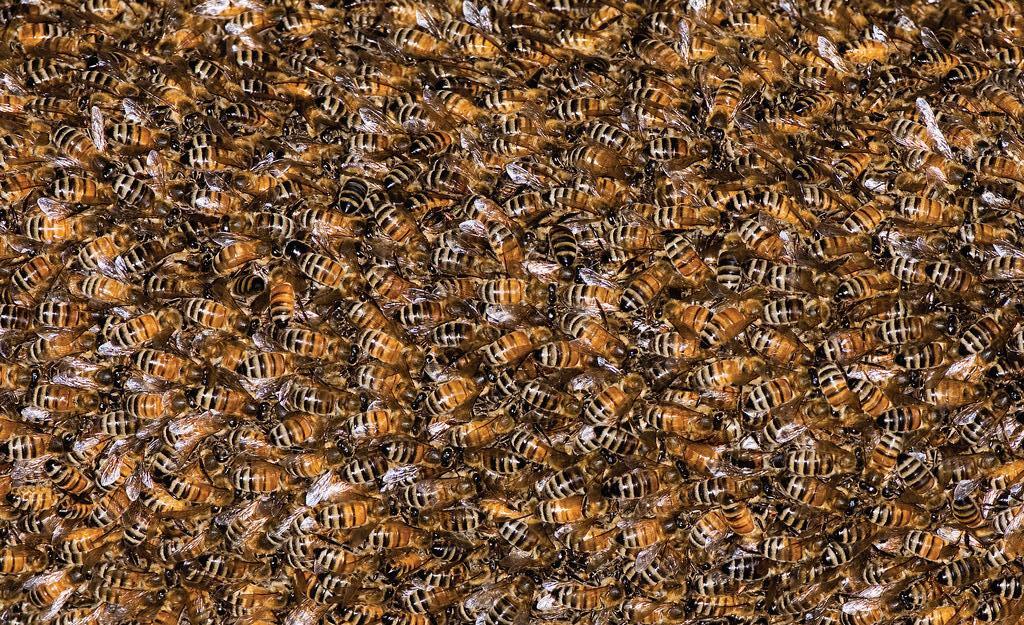
It’s 10:40 a.m. Emily has picked out the templates for eighteen “Queenie” style flower petals and is tracing them onto lengths of organza silk. Stiffer but lighter than silk taffeta, organza costs $35 a yard. Emily fits the templates closely to minimize waste. Christine marks five inches out on Eleni’s brim, trims its perimeter to length, and sits down at a 100-year-old Singer sewing machine to sew in the sweatband. Next, she sews a stiffening wire inside the dark red taffeta trim around the outside of the brim. It’s tricky work—the wire wants to pop loose—but she’s done in about ten minutes. An abbreviated sequence of her next steps shows her attaching a four-inch width of sheer pink “horsehair,” a nylon mesh that will run around the outside of the straw brim. She then cuts four long, half-inch-wide blades of plastic and covers them with red silk; these will form decorative loops that will crisscross over the brim.
Next, she plops the emerging hat—it’s starting to look stylish—onto a faceless wooden mannequin and steams the crown to fit Eleni’s head. Then she sews decorative taffeta trim around the outside of the horsehair, and twice steam-irons the brim.
Cut flower garden: Ten stories up in her Manhattan workshop, Christine (right) and Emily Zimmerman, her production manager, cut flowers for Eleni Hapsis’s derby hat, using the Queenie flower petal pattern.

“Do you want to put on the trim?” she asks Emily a few minutes after noon.
“I think you should do it,” Emily replies. Christine is fine with that, and scoops up the many petals Emily has cut to size and shape. She folds and bunches them and sews them with needle and thread into an enormous, multi-hued blossom, with mauves and pinks forward, and greens and blues beneath and behind. She stitches it onto the front of the crown, bends and angles the loops, attaches them, and holds the finished creation aloft with a smile. It’s 12:35 p.m.
Eleni’s Derby Hat and black fascinator were in her hands two weeks later. “They were the biggest hat boxes I’d ever seen,” she would marvel in a phone call. “I opened them and went ‘Oh, my God!’ They were so stunning, even better than the pictures or the ideas in my head. It’s not until you actually have them in your hands that you feel the beautiful passion that Christine puts into it. They took my breath away.”
For Eleni, the two-day Derby weekend “did not disappoint for a second.”
“It was a reminder of the times when men and women enjoyed dressing up and getting out,” she says. “Everybody looked classic and well put together.” She and Vasily, who sported a snappy magenta fedora, “got compliments everywhere. I said to him, ‘Why didn’t we do this sooner?’”
If Christine’s 150-rose hat stole the show at the Kentucky Derby, her hats were also a showstopper at the 2023 Comic Con festival in Wellsboro, a celebration of comic books, fantasy, and costumery. Set up on her table in St. Paul’s Episcopal Church hall was a tall black sorcerer’s hat, worthy of Merlin himself. White


By Ann E. Duckett
The arts have long been associated with Sonnenberg Gardens & Mansion
State Historic Park, one of the nation’s oldest and most meticulously preserved Victorian estates. For decades it has provided a look into the lifestyle of the wealthy during an era when affluence and opulence defined entertaining. Treasures from around the world can be found within the sprawling forty-room, 19,000-square-foot Queen Anne-style mansion, and in the nine unique themed gardens cultivated among its remaining fifty acres.
Located just a few blocks from bustling Main Street in downtown Canandaigua, the property was the summer home of husband and wife Frederick Ferris and Mary Clark Thompson, who purchased the original 300-acre farmstead named Sonnenberg (German for sunny hill) in 1863. The distinctive architecture and scale of the project demanded patience, and in 1887 the transformational work was completed, offering sweeping vistas from the manicured
lawns to the gardens to Canandaigua Lake.
Now in its twenty-third year, Arts at the Gardens, which runs Saturday, July 20 to Sunday, July 21, is recognized as one of the region’s most anticipated art shows, in great part because of its extraordinary location.
“I think Sonnenberg’s setting is one of the things that makes AATG unique—the artists and their work are what really make the show, but the setting among the grounds and gardens adds an element not found at many shows,” says AATG Artist Liaison Becky Pollot. “It makes for a more relaxed setting where people are able to enjoy the event at a slower pace.”
The garden designs were inspired by Mary’s trips abroad in order to establish a living memorial to her husband, who died in 1899. Work began taking shape in 1902 and lasted for nearly twenty years. Her love of the arts, combined with an eye for detail, created some of the most enchanting formal and informal gardens found anywhere; styles include Victorian, Ital-
ian (with sculptures and statuettes), Colonial, and Japanese (complete with a children’s tea house). Mary’s vision and dedication served to preserve Sonnenberg, placing it among the top parks in America that have successfully— though not always easily—secured their place in history.
More than sixty artists will feature a variety of work in different mediums including oil, acrylic, and water color, plus handmade crafts, pottery, jewelry, and more. Linda Griswold Davis, a perennial vendor at the show since 2019, is a printmaker who creates relief prints in both linoleum block and woodblock. As a retired art teacher and gardener, this show combines two of her passions. Time spent at the show holds a special appeal for her.
“I sell my work in some area shops and only do a limited number of art shows. This is one I like to return to. It’s the helpful, welcoming spirit that the staff maintains and extends








412 N. Franklin St. • Watkins Glen, NY 14891
412
Open Mon-Sat 9am-8pm • Sun 10am-8pm
*Subject to change based on NYS regulations. www.famousbrandsoutlet.com
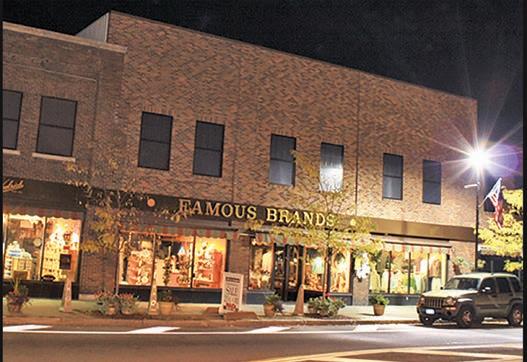

Uniting continued from page 14 to both artist and visitors that has made it a lot of fun,” Linda says. “It’s thoughtfully organized for all to enjoy…The grounds are gorgeous and beautifully maintained. Booths are placed amongst paths throughout the gardens allowing patrons to walk through parts of the gardens as they see artwork. Experiencing the high degree of outstanding work from other artists while listening to music in this serene setting is just one reason why I love being at this show.”
A special aspect of the event is returning this year. Becky explains, “We’ve brought back, and will be hosting, the Emerging Artists Tent. While we have artists who have participated in the show for years, guests can expect to see some work from artists who have not shown work at shows prior to this year. They receive a reduced fee, and we provide a table and space within our events tent; many of these artists don’t yet have full show set-ups, like a tent, or tables, for instance.”
In addition to exploring the mansion, guests can wander through the Lord & Burnham greenhouse complex, a carriage house, and a former aviary. Enjoy a light lunch or snack at the Garden Café with outdoor seating, or sample wine at the Finger Lakes Wine Center located just below the Bay House Gift Shop across the way. Food trucks and food vendors will also offer a variety of fare. The free tram service is available for guests with limited mobility.
“AATG was the brainchild of three community members who wanted to bridge more of a connection between Sonnenberg and the local arts community and the community at large, with the added benefit of providing an opportunity for additional revenue—always important for a nonprofit organization,” Becky notes. “This is our largest annual fundraiser, and while the funds from the show aren’t earmarked for one project in particular, we continue with maintenance and work on the property year-round.”

Expanding art appreciation into the community is taking root, as AATG is going to tie in with another show in town this year. Historic Main Street sets the stage for the 36th annual Arts and Music Festival offering art, music, food, demonstrations, and children’s activities (Friday, July 19, to Sunday, July 21). More than 100 small businesses, unique shops, and restaurants in the four block district will be joined by 100 juried artists, musicians, and food trucks at the region’s only three-day event of its kind.
“This will be the first year that Arts at the Gardens coincides with Canandaigua’s downtown Arts and Music Festival. We are excited to be working alongside organizers to cross-promote the two shows. We think this will be a wonderful opportunity for people to visit Canandaigua and have a weekend full of art and entertainment,” Becky explains.
Sonnenberg Gardens & Mansion State Historic Park is located at 250 Gibson Street, Canandaigua, and is open seasonally from May through October 31, Thursday through Monday, from 9:30 a.m. to 4:30 p.m. (closed Tuesday and Wednesday). The show runs from 10 a.m. to 5 p.m. July 20 and 21. Admission is $10 for adults, and $5 for children age three to fifteen years old. Children under age three are free. For more information, call (585) 394-4922, visit Facebook, or go to sonnenberg.org.

Ann E. Duckett, owner of Little Bleu Catering and Events, is a certified cheesemaker and recovering cheesemonger, who now devotes her time to educating and helping others find their cheese bliss through classes, presentations, and special events. Famous Brands began in







Rhapsody in red, white, and Biegel: Jeffrey Biegel has chosen the EMMF orchestra to accompany him for the Pennsylvania premiere of Peter Boyer’s Rhapsody in Red, White, and Blue as part of his fifty state Rhapsody National Initiative.
By Lilace Mellin Guignard
The eighteenth season of the Endless Mountain Music Festival opens at 7 p.m. on Friday, July 19, at Steadman Theatre on the Mansfield campus of Commonwealth University with the Pennsylvania premiere of Rhapsody in Red, White, and Blue, composed by Peter Boyer and featuring Jeffrey Biegel on piano. Jeffrey requested this composition to honor the centennial of Gershwin’s Rhapsody in Blue and celebrate America through music.
Jürgen Thym, Professor Emeritus of Musicology at the Eastman School of Music, University of Rochester, states that Peter Boyer “is a composer worth watching (or hearing). He is one of the most prolific composers in the United States nowadays, writing for the concert hall as well as for film and television. Quite a number of his works are on American themes: Ellis Island: The Dream of America (for which he received a Grammy in 2006 and which PBS featured nationwide in its Great Performances series in 2018), The Dream Lives On: Portrait of the Kennedy Brothers (2010), and Balance of Power (2020-21).”
Jeffrey will be playing with orchestras in all fifty states this year during his Rhapsody National Initiative and chose the EMMF
orchestra for the Pennsylvania debut. He says, “The centennial of George Gershwin’s Rhapsody in Blue provided the inspiration to celebrate America through music, to show that music can unite us—by which I mean all of us in the US. So far, in each performance, the audiences cheer, cry, and stand together in solidarity.” Then at 7 p.m. on Saturday, July 20, at Corning Museum of Glass, Jeffrey is featured again playing Rhapsody in Blue, by Gershwin, who composed it for solo piano and jazz band. It’s a mix of classical and jazz, and the piece helped define the Jazz Age.
EMMF Music Director and Conductor Stephen Gunzenhauser welcomes another great pianist this season: Sheng Cai, who played with EMMF in Pennsylvania several years ago, will come to Corning audiences at 7 p.m. on Saturday, August 3. He will be playing Mozart’s Piano Concerto #20 in D, which includes cadenzas that Mozart improvised and, sadly, were never written down. Beethoven, Hummel, Brahms, Clara Schumann, Busoni, and others fashioned their own when playing this piece. How will Sheng Cai approach the improvisatory sections? You have to be there to find out.
Stephen has once again put together an eclectic slate of programs to delight Twin
Tiers audiences, many of whom are not avid classical music fans. “A lot of people say all we do is classical music,” Stephen explains, “and my response is we don’t. We do symphonic music.” Knowing that some people might need convincing, several free concerts are designed to entice first-time attendees as well as seasoned season ticket holders.
One free concert, Neil Diamond to Funk, is at 2:30 p.m. on Sunday, July 21, at the Wellsboro High School Auditorium. Featuring the Endless Mountain Music Festival Orchestra playing a selection of popular favorites from “East St. Louis Blues” to “Sweet Caroline,” “What a Wonderful World,” and “YMCA.” Also featuring clarinetist Trina Gross in “Viktor’s Tale” by John Williams. In another free POPS concert, Anthony Nunziata—singer, songwriter, and BroadwayWorld award winner—is back for his third time. At 2:30 p.m. Sunday, August 4, at Corning Museum of Glass he’ll perform It’s Showtime, which includes new arrangements of his songs and classics, some funk, and motown.
Check the schedule on pages 22-23 or at endlessmountain.net, where you can also purchase tickets. Or call (570) 787-7800.


august 9, 2024
7-10PM Friday august 9, 2024
7-10PM
on Sale July 1st
Sunday, July 28 - Saturday, August 3
176 Fairgrounds Rd, Shinglehouse, PA
Free Admission • Free Parking • Free Entertainment Rides every day 1-5 and 6-10
Sunday July 28
11:00am Rabbit Show • 12:00 noon Horse Pulls
6:00-10:00pm Music by Floyd Foster, Southern Gospel and County Music
Monday July 29
10:00am Goat Shows • 6:00-10:00pm Music by Generations
Tuesday July 30
9:00am Swine Show • 10:00am Horse Classes 6:00-10:00pm Music by Chris Eckert
Wednesday July 31
10:00am Horse Classes • 9:00am Beef Show • 1:00pm Sheep Show
5:00pm Barnyard Olympics • 6:00pm Animal Dress-Up Contest
6:00-10:00pm Music by Southern Influence
Thursday August 1
9:00am Dairy Show • 12:00 noon Horse Classes
6:00-10:00pm Music by Happy Days (a 50’s Review)
8:00pm Crowing of the 2024 Potter County Fair Queen
Friday August 2
9:00am Junior Dairy Show • 10:00am Horse Fun and Costume Show • 7:00pm 4-H/FFA Livestock Auction • 6:00-10:00pm Music by Dave Shields and Friends
Saturday August 3
6:00-10:00pm Music by Trigger Happy



Friday July 26
5:30pm Jeremy James 6:45pm Doc Possum

Friday August 23
6:00pm Avalanche U.S. Army Band 10th Mountain Division Fort Drum, NY
Saturay August 24













Riverfront Park - Sayre, PA 4:30pm Doc Cavallaro













6:00pm Splash Band 8:30pm Fireworks














Lake water(color): When Hannalore Wolcott-Bailey moved to Penn Yan, she found a landscape and community that inspired her to keep painting.

By Karey Solomon
Outside Hannelore Wolcott-Bailey’s Keuka Lake home, a clump of white snapdragons mysteriously sprouted from the foundation and burst into bloom. The artist, who has invested nearly a century in seeing and preserving the beautiful, often finds the beautiful looking for her.
Graceful posture and long, elegant fingers belie her ninety-eight years, though the scope of Hannelore’s recollections span a period of difficult history—for her as well as for the world. Born in pre-WWII Germany, young Hannelore Fuhr loved drawing and painting from an early age, preferring those to other activities. But after the war began, acquiring an education became difficult.
Nonetheless, she persevered, and in high school she learned of an art competition. The prize was learning cartoon animation—she applied and won a place in their classes. Because her family lived in the Ber-
lin suburbs, she took the train twice each day, except for the required overnight shifts each student was required to take. These were to protect the school by throwing any dropped bombs off the roof before they could explode. One night a friend asked to take Hannelore’s shift in exchange for a later night she wanted free. “That next morning, the building was in ashes,” she says. “My friend was killed.”
The constant danger didn’t end with the war. The area where her family lived became East Berlin, under Russian domination. Hannelore, her sister, and her mother had a terrifying encounter with drunken Russian soldiers who celebrated by shooting everything in their path. When the three were ambushed, then pursued, by soldiers bent on harm, they took refuge in a neighbor’s house, frantically dodging bullets as they raced up the stairs, finally barricading themselves in the attic. The soldiers broke
through the door, aimed, and fired. The guns clicked, out of bullets. They escaped before their pursuers could reload.
Hannelore and her sister were later able to escape to relatives in West Germany, where her sister met her future husband, an American soldier. They got married and moved across the ocean to Elmira. Hannelore worked in a Berlin plastics factory and attended art school in Frankfurt.
“My parents worried, ‘How can you support yourself with art in a country that just lost a war?’” They suggested she follow her sister to America, an arduous voyage by boat made worse when she contracted dysentery during the trip and nearly died.
Through new neighbors, she met her future husband, co-founder (with his brother) of Seneca Foods, though it was some time before the pair could understand each other. She found work designing greeting cards for Artistic Greetings in Elmira.
When she married in early 1953 and moved to Dundee, it was a huge culture shock for someone who couldn’t understand her neighbors, drive a car, or easily shop.
“For ten years I didn’t paint,” she says. Instead, the young mother concentrated on her family. After they moved to Penn Yan, she met other artists and re-discovered her passion.
“I took every workshop that came along,” she says. And while she’d previously painted in oils, she began working in watercolor, finding it the medium that best expressed her vision. She traveled to France and painted in Claude Monet’s garden at Giverny. Her art became a colorful diary of travels with her husband, and workshops with other artists. After her husband died of Alzheimer’s, she married a widower from Wellsboro, dentist Tom Bailey. She survives him as well.
For twenty years she hosted a barn show in Penn Yan for herself and other artists, a successful and much-anticipated annual event partly prompted by Dr. Bailey’s joke: “You have to sell some paintings! We have to eat!” She sold paintings, painted more, mentored young artists, and won the respect and esteem of her fellow Penn Yan artists, who named her Artist of the Year in 2023.
For many years the family swam and sometimes stayed at a small cabin on Keuka Lake with a tiny sliver of lakefront. Hannelore redesigned it into her permanent home, with a wall of large windows offering a panoramic view of Keuka Lake, and a roomy loft studio where she paints, mats, and frames her work.
She’s often inspired by her lake views, new with each seasonal change. And she paints every day. “It’s all I can do,” she says. “I can’t do a flower garden”—because she broke her hip last winter— “but I can paint flowers.” Because it takes time to finish a painting to her satisfaction, she’ll take photos to capture the light and refer to them later. A recently-completed painting on her worktable is a visual reminder of a trip to the Galapagos, where she saw sea lions atop a small boat, looking as though they’d assumed command of the vessel.
“I always want something alive in every painting,” she says.
A picturesque barn is set off with self-possessed sheep; a spring landscape becomes even livelier with people enjoying its blossoming trees. A viewer can vicariously enjoy a lake scene with a glimpse into a sailboat whose passengers are themselves watching the scenery, and each other. A painting of the Berlin Wall includes a protester on its west side. Look closely at her cherished painting of her childhood home and see children clustered around the mother sitting in the shady doorway, one child on her lap.
From July 2 to August 10, 2024, Hannelore’s paintings, along with works by landscape painter Jay Costanza, will be on exhibit at the Arts Center of Yates County, 127 Main Street, Penn Yan.
“Over the last four decades, she’s become one of the most popular and recognizable artists to be associated with the Arts Center,” says Arts Center Director Kris Pearson. “She’s also generous in sharing her knowledge and enthusiasm for art.”
Find out more about the summer exhibit at artscenteryatescounty.org/exhibits or call (315) 536-8226.

Karey Solomon is the author of a poetry chapbook, Voices Like the Sound of Water, a book on frugal living (now out of print), and more than thirty-six needlework books. Her work has also appeared in several fiction and nonfiction anthologies.

Family-owned business for over 40 years

Over 100 vendors
Antiques, candles, collectables, books, jewelry, handmade items, fresh baked goods, and so much more
Open Thursday-Monday 10am-5pm 10 Carpenter Rd, Elmira, NY • (607) 562-7416
Visit R & R Refinishing for furniture repair/restoration, woodworking, custom building, and much more (607) 857-1484






Friday, July 19
“Opening Night Fireworks in Red, White and Blue!”
7:00 p.m. – Steadman Theatre, Commonwealth University at Mansfield, Mansfield, PA
Sponsored by C&N
Bach ...............................................................
Suite No. 3
Creston ................................................ “Dance Overture”
Cowell.................................Symphony No. 13 (“Madras”)
Intermission
Boyer ................................. PA premiere of “Rhapsody in Red, White and Blue” Featuring Jeffrey Biegel, piano
Saturday, July 20
“Happy Birthday, Gershwin!” A Celebration of the 100th year of “Rhapsody in Blue”
7:00 p.m. – Corning Museum of Glass, Corning, NY
Sponsored by Corning Incorporated and Mountain Home Magazine
Brahms ................................................
Intermission

Symphony No. 2
Tsontakis ........................................................ “Laconika”
Gershwin ......................................... “Rhapsody in Blue”Featuring – Jeffrey Biegel, piano
Sunday, July 21
“Neil Diamond to Funk” Pops Concert - Featuring the EMMF Orchestra playing a selection of popular favorites from “East St. Louis Blues” and “Also Funk Zarathustra,” to “Sweet Caroline,” “What a Wonderful World,” and “YMCA.” Also featuring clarinetist Trina Gross in “Viktor’s Tale” by John Williams.
2:30 p.m. – Wellsboro High School Auditorium, Wellsboro, PA - FREE Sponsored by the Dunham Family Foundation in Memory of Robert N. Dunham, UPMC & UPMC Health Care, and Wellsboro Electric Company

Sunday, July 21
“EMMF Brass Under the Stars!” featuring the EMMF Brass Section
8:00 p.m. – Cherry Springs State Park, Overnight Astronomy Observation Field (by the telescope domes) - FREE Sponsored by The David G. Patterson Foundation and the Galeton Foundation
Monday, July 22
FREE Seminar: “Maverick American Composers” featuring George Tsontakis, Stephen Gunzenhauser, Hiroko Sakurazawa
12:00 p.m. to 1:30 p.m. – Corning Museum of Glass, Corning, NY Sponsored by Corning Incorporated





Monday, July 22
“EMMF String Quartet Performs Classic Gems” featuring Lisa Scott, violin; Hua Jin, violin; Charlie Alves, viola; and Perry Scott, cello
7:00 p.m. – 171 Cedar Art Center, Corning, NY Sponsored by Corning Incorporated
Tuesday, July 23
“Flute and Harp Sister Duo!” featuring Melissa Mashner, flute; and Melanie Mashner, harp
7:00 p.m. – Deane Center Grand Community Room, Wellsboro, PA, — Sponsored by FCCB
Wednesday, July 24
“Music is My Weapon!” featuring Jason Mathena and David Wert, percussion
7:00 p.m. – Knoxville
Yoked Church, Knoxville, PA – FREE


Sponsored by the Deerfield Charitable Trust
Thursday, July 25
“EMMF’s Famous Brass Quintet”
7:00 p.m. – Deane Center for the Performing Arts, Coolidge Theatre, Wellsboro, PA–BYOB
Sponsored by Spencer, Gleason, Hebe, & Rague, PC
17 EVENTS IN 17 DAYS! JULY 19-AUGUST 4, 2024

Friday, July 26
“Hear the Voices”
7:00 p.m. – Commonwealth University at Mansfield, Steadman Theatre
Sponsored by Ward Manufacturing
J.G. Albrechtsberger ..............Concerto for Alto Trombone
Featuring Alexander Walden, trombone
Arban Variations on “Norma”
Featuring Brian Strawley, trumpet Teresa Cheung, Resident Conductor Intermission
Rutter .................................................................
Requiem
Peggy Dettwiler, Choral Director
Saturday, July 27
“Dvořák Shines”
7:00 p.m. – Corning Museum of Glass, Corning, NY
Sponsored by Corning Incorporated
Lyadov ................................... “Mazurka”
Mozart ”Sinfonia Concertante”
Dvořák

Featuring Hua Jin, violin and Carol Argenta, viola Intermission
“In Nature’s Realm” Opus 91, “Carnival” Opus 92, “Othello” Opus 93
Sunday, July 28
“Sweet Sounds of Violin and Piano” featuring Noelle Tretick Gosling, violin and Erico Bazeera, piano
7:00 p.m. – Gmeiner Art & Cultural Center, Wellsboro, PA
Sponsored by Eugene Seelye
Monday, July 29
EMMF String Quartet featuring Jennifer Farquhar and Diane Joiner, violin; Lauren Strachen, viola; and Gita Ladd, cello
7:00 p.m. – Tioga County Courthouse, Wellsboro, PA
Sponsored by Guthrie
Tuesday, July 30

Clarinet Recital featuring Trina Gross
7:00 p.m. – Deane Center for the Performing Arts, Grand Community Room, Wellsboro, PA
Sponsored by Seneca Resources
Wednesday, July 31
“Endless Mountain Standard Time” featuring Ron Stabinsky, jazz piano and Friends
7:00 p.m. – Penn Wells Dining Room, Wellsboro, PA
Sponsored by Penn Wells Hotel(Dinner available 5:30 p.m. – 6:30 p.m. For reservations, call 570-724-2111)

Thursday, August 1
Dave Stahl Jazz Sextet
7:00 p.m. – Deane Center for the Performing Arts, Coolidge Theatre - BYOB
Sponsored by Hon. Daniel & Mrs. Mary Ann Garrett
Friday, August 2
“The Way Things Were”
7:00 p.m. – Commonwealth University at Mansfield, Steadman Theatre
Sponsored by Visit Potter-Tioga & Quality Inn of Mansfield
D. Shostakovich .... “Festive Overture”

Schickele ....... “Pentangle, Five Songs for French Horn and Orchestra”
Featuring Robert Danforth, French horn Intermission
Schubert .................................................Symphony No. 5
Saturday, August 3
“Franckly Speaking”
7:00 p.m. – Corning Museum of Glass, Corning, NY
Sponsored by Corning Incorporated
Kabalevsky ........................... “Colas Breugnon Overture”
Mozart ....................... Piano Concerto No. 20 in D minor Featuring Sheng Cai, piano Intermission
Franck............................................ Symphony in D minor
Sunday, August 4
“It’s Showtime!” featuring Anthony Nunziata, with orchestra
2:30 p.m. – Corning Museum of Glass Auditorium, Corning, NY - FREE
Sponsored by Corning Incorporated, Community Foundation of ElmiraCorning and the Finger Lakes, the Rotary Club of Corning and Laura Douglas, The Arts Council of the Southern Finger Lakes






Pants on a log: Two contestants in the wood hick games work to stay topside while event organizers look on: Holly Komonczi, Lumber Heritage Region executive director (woman left); Jennifer Haines, Pennsylvania Lumber Museum educator (woman right); and Josh Roth, Pennsylvania Lumber Museum director, with arms upraised in the water.


By Anne Lugg Alexander
Situated on Route 6, thirty miles due west of Wellsboro and eleven miles east of Coudersport, a rustic campus holds a yearly celebration of wood hick culture. Every July at the Pennsylvania Lumber Museum (5660 Route 6), the scent of sweet wintergreen from the birch oil still mingles in the air with biscuits fresh from a wood-fired oven and bring the 1800s alive. The ring of a hammer on an anvil rises above the din of laughing and cheering spectators. From some hidden hollow, a steam whistle sounds over the singing of the fifty-two-inch head saw in the steam-powered sawmill. This is the annual Bark Peelers’ Festival, where volunteers step into authentic nineteenth-century roles—spinner, blacksmith, camp cook, and laundry washer—to demonstrate life in an authentic lumber camp.
Adventurous visitors wait in line to sign up for the Wood Hick Games, vying for a cash prize and the possibility of taking home the title of Grand Champion Bark Peeler. The first of the games is the greased pole.
As its name implies, contestants straddle a heavily greased pole and attempt to knock their opponent into the pile of fresh sawdust below. Many teenagers sign up for this event, and it elicits the most laughs from onlookers.
Next is log rolling, an activity that tests teamwork as well as upper body strength and speed. A pair of contestants, each with their own peavey (a logging tool used to move logs while on the ground) is timed as they roll a log up and back down a lane.
The crosscut saw challenge requires stamina as pairs try to be the first team to cut their disc off the ends of logs, using the museum’s equipment. The event continues through elimination.
The final challenge draws a crowd to the bank of the log pond, where contestants in the log birling event try to stay on their log the longest. Participants from high school age to retirement age are heckled and cheered as they lock eyes across the rotating log, each trying to read the body language of the other in an attempt to be the last to succumb to
gravity and a humbling immersion.
Younger visitors pick out frogs for the frog jumping contest and wait eagerly as the eight-foot-long log cake is cut and shared with guests. Some may sign up for the kids’ sunflower seed spitting contest.
There is even a beard and moustache competition with four categories for those whose impressive facial hair needs to be shared with the world.
The 2024 festival is Saturday, July 6, and Sunday, July 7, from 9 a.m. until 5 p.m., both days. For more information, go to the events tab at lumbermuseum.org, find the Pennsylvania Lumber Museum on Facebook, or call (814) 435-2652.

Anne Lugg Alexander lives in Nelson, Pennsylvania, with her family. Most days you’ll find her at her forge, Higher Ground Welding & Art in Elkland, making original sculptures or repairs, but during the Bark Peelers’ Festival you’ll find her at the old birch oil still.















Living happily ever after: The Three Bears, as the Historic Courthouse Complex in Ovid is known, is preserved by the Friends of the Three Bears, which hosts the farmers market, lectures, concerts, and fairs held on the grounds.

By Gary B. Xavier
There are three of them. They sit, majestically, nearly 1,000 feet above sea level and over 500 feet above the beautiful waters that form the border of the county between Seneca and Cayuga lakes. Ovid was the seat of government for Seneca County—the county between the lakes—in the days of the nineteenth century. The biggest of the three was built in 1845 in the Greek Revival style common of the day as the county courthouse. It served as such for over a century. I can only imagine how those passing by on the village’s muddy streets were awed by the imposing structure. The smallest of the three buildings was built with the courthouse as a records storage building, but when progress outgrew it, the center building was added in 1862. They sit in mute silence to the passing of time.
It wasn’t always so…
•
The park was full that evening nearly seventy years ago, with lights flashing, music playing, and all around the sounds of carnivalgoers. Hardly a square foot of grass was visible beneath the scores of human feet, as friends played games, rode the rides, and ate and drank together.
It was the annual Firemen’s Carnival, held every summer in the park that hosted those three buildings on the hill, and, as a child, it was my favorite time of year. It was when the carnival came to town, and we’d watch in awe as our park—where we played ball and rode our bikes and searched for treasure beneath the overgrown bushes atop the hill—became the carnival site once again.
Hammers swung as nails were driven to construct game booths, food concessions, and a local favorite—the cake booth—where cakes baked by nearly every housewife in the village were raffled off by the spinning of the big wheel mounted on a post at the back of the booth. We always tried to win Mom’s cake—we knew just how delicious it would be.
And the carnies—as the locals called them—those hardy souls who traveled from town to town carting rides and games and gaudy prizes, and then went about the chore of once again constructing those rides from what seemed to us to be a giant Erector Set. With frames of steel to support the Ferris wheel, the swings, and the wildly spinning teacups and saucers, it seemed they’d never find a level spot to secure their means of mak-
ing a living off our enjoyment. With the help of cement blocks, bricks, and a bunch of twoby-eights, up went the giant wheel, reaching into the overhanging branches of the stately maples and oaks lining the park. And though it wobbled and groaned and sometimes looked as though it were about to topple, it never did.
My father was always there, out of the public eye as he preferred, standing a dozen feet from wherever an announcer, whomever that might be, put their mouth near the microphone. For that microphone, the amplifier that powered it, and the speakers that broadcast those words, were Dad’s. So he stood by, fine-tuning the settings on his StrombergCarlson as the announcer leaned in to begin. “Ladies and gentlemen…”
For several decades, from the 1940s until portable sound equipment became prolific in the 1970s, Dad was there every time there was a public gathering. Xavier Radio, the speakers proclaimed in beautiful gold leaf lettering for all to see. The advertisement he got from his name emblazoned on those speakers was his only compensation, and as the sounds emanated from those leather-bound speaker cases hung high on a pole or a nearby tree, I basked
in the glory of my dad’s involvement in such a wonderful enterprise.
And then the sounds, the lights, and the crowds were gone…
•
The carnival moved to other venues in later years, and then disappeared from the local scene forever, apparently victim of liability issues or maybe just a lack of enthusiasm on the part of those who struggled to make it happen. But the park survived, and those magnificent buildings aged and grew in moderate silence.
My ball-playing days had ended, and my lawn-mowing days had begun, and, for a short time, I pushed a mower through the grass on that vibrant hillside, trimming closely to each and every tree as my big brother rode his Ariens up and down the hill. I looked at those buildings as I worked, marveling at their beauty, but never knowing that they represented not only classic architecture, but also a testament to those who constructed them.
As the years went by, the northern end of the county became more densely populated, and Waterloo was named to be a county seat as well. Ovid now shared its status as the center of government, making Seneca a dual-shire county. Court continued to be held in the Ovid Courthouse until the 1970s, when the decision was made to move all proceedings to Waterloo. No longer in use, the massive building began to fall into disrepair.
In 2002, a group of concerned citizens organized to help preserve and protect this historic complex, locally known as The Three Bears. Though still owned by Seneca County, the buildings are now maintained through the efforts of this vibrant group of volunteers known as Friends of the Three Bears (threebearsovid.org). Through their work, the courthouse complex and the park have been reborn. Tours, lectures, and craft shows dot the summer calendar, and the park is host to a farmer’s market on Thursdays from 3 p.m. to 6 p.m. and lawn concerts in the gazebo June through August. The center building, Mama Bear, is home to the Seneca County Tourism Center.
•
We walk up the glistening concrete sidewalk, my best friend Brandon and I, and as he stops to sniff where others have walked, I look at those three buildings built nearly two centuries ago, and think of the thousands, perhaps millions of feet that have walked this same path. The smooth dark gray slate sidewalk of my youth is gone, as are the steps that led from the street to the courthouse, replaced now with gently sloping concrete.
I miss the old slate, but its slippery-when-wet surface caught me off guard many times, and those steps, despite the fact that our bikes often went down them with a clatter and a bone-jarring finish, are better now that they’re gone completely. I think of the years I’ve spent in this park and remember the tree stump that served as home plate for our little games of home-run derby, and the water tower that rose on the north side of the courthouse—where local legend had it a nest of copperheads lived.
And if I close my eyes I can feel the joy of the carnivals of my youth, and I know, somewhere, that Dad is minding the sound from his speakers, as the smoke of Prince Albert tobacco wafts from his pipe.

Ovid native Gary Xavier has written over 250 Life Lines columns for the Finger Lakes Times, and several of his stories have been published in the Chicken Soup For the Soul series of books. He can be reached at gary_xavier@yahoo.com or P.O. Box 365, Ovid, N.Y. 14521.




Half full or half empty?: Neither—Matt Weed’s cart is always Haflinger and can usually be found at the Draft Horse Show at the Troy Fair, where this was taken.

By Gayle Morrow
If you haven’t fallen in love with draft horses yet, well, now’s your chance. They’re big, beautiful, and they have really, really soft noses. Need a shoulder to cry on? Theirs are made for wrapping your arms around—even if you have to stand on tiptoes (or a crate) to reach them (be sure to ask first). And they’ll be at the 148th Troy Fair for the annual Draft Horse Show on Sunday, July 21.
“I’ve been kind of around draft horses ever since I can remember,” says Tricia Jackson, of Alba. She’s serving as the announcer and department co-chair for the show. She says that when she was in high school there was a “change-over in running the show, so I agreed to take it on,” in part because she really wanted to push the youth to be involved. It runs in the family. Her dad, Tom Hojnowski, an ag teacher at Canton High School, is the show superintendent. He says he’s “relatively sure” he took over that job around 2012, but had been involved with it since the late 1990s.
“The late Tom Young of Alba encouraged me to do so since we did not want to lose the show,” he recalls. “I kept showing
Clydesdales with Tom for years after that. The PA Farm Show was always the most exciting show for us.”
Tricia has memories of Tom and his Clydesdales, too.
“He bred them, he worked with them, and he was a big figure in our draft horse community,” she says. One of the events at the show is dedicated to him—the Tom Young Memorial Cart Obstacle Class. This event is exactly what it sounds like—the driver takes a team of very large horses over, around, and through a variety of obstacles in the arena. Other competitions include additional cart classes, showmanship, Western and English riding, and the hitch classes.
Tricia says the arena can accommodate a six-hitch team, but just barely, so they limit the hitch classes to four. There’s also a unicorn hitch class. That is a three-horse combo, with one in the lead and the other two side-by-side at the rear. Any time you can watch a two-legged 150-pound human in command of six or eight tons of four-legged equines is bound to be exciting. Loveable or not, these animals are huge, and a misstep
can be dangerous for person and horse.
The familiar breeds will be on hand for the show—Percherons, Clydesdales, Belgians, and Haflingers—Tricia characterizes the Haflingers as the ponies of the draft world. They’re typically 13.2 to 15 hands (a hand is four inches) from the ground to the withers—the top of the shoulder. The Clydesdales, Belgians, and Percherons range from 16 to 19 hands.
“It’s a family atmosphere that draft horse exhibitors have,” Tricia notes, adding that shows like this help people understand what draft horses can do. She loves them all, but admits that the Clydesdales are kind of her favorites.
What will yours be?
The Troy Fair is July 22 through 27 at Alparon Park, at the junction of Routes 6 and 414. Gates are open from 8 a.m. to 10:30 p.m. daily. Parking is free, and there are a variety of gate passes available. The Draft Horse Show starts promptly at 10 a.m. Find out more at troyfair.com or call the fair office at (570) 297-3648.














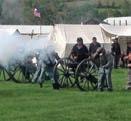






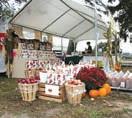

















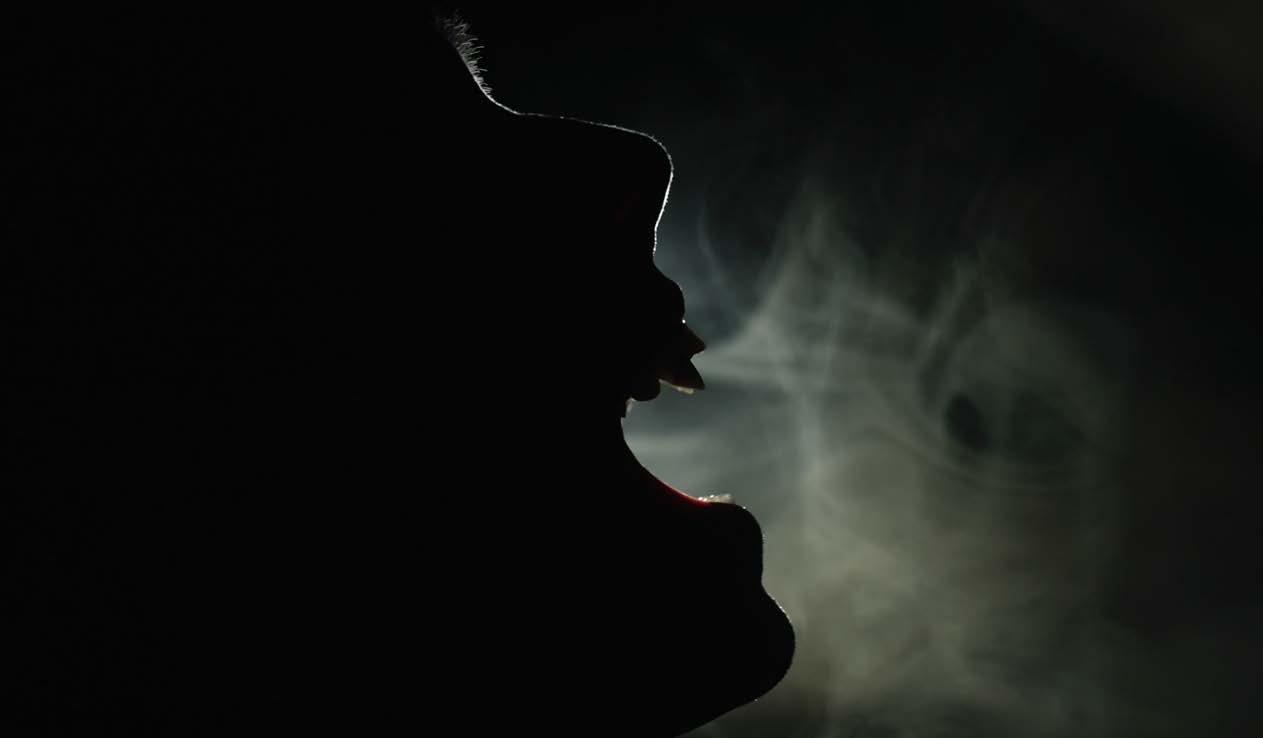
By Lilace Mellin Guignard
“Lordy, Lordy have mercy on me Lay off that whiskey and let that cocaine be” —from Cocaine Blues by Johnny Cash
Move over Sasquatch, there’s a new cryptid coming to the Tioga County, Pennsylvania woods. Technically Cocaine Werewolf has already been here, since Mark Polonia, the director, filmed this horrorcomedy in December 2023. But this coked-up canine will steal Bigfoot’s spotlight on July 5 and 6, 2024, during the world premiere of the low budget cult film at the Arcadia Theatre in Wellsboro at 9 p.m. each night. Mark will be there, along with producers Tim Yasui and David Sterling, and much of the cast. A Q&A session will follow in the 200-seat theater. There’s an after party at the Gas Light Bar & Grill at 35 Main Street.
If B horror movies aren’t your thing, you might wonder what there is to howl about. (I mean, IYKYK*.) The premise according to the trailer is: “Cocaine, cash, and a crew filming a horror movie in the eerie woods of Northern
Pennsylvania clash when an unexpected visit from a blood-thirsty werewolf literally enters the picture—with deadly results!” The fact that this movie is being made by our very own cult horror film master, who has 108 movies under his belt and fans around the world, is one thing. The fact that the storyline seems to almost be about him—minus the drugs and killer monster—makes this meta story even more humorous.
The screenplay by Tyger Torrez was originally set in LA. When Mark was contacted about making it, he was coming off a busy year and not looking for another project. “I’d already made ten movies in 2023 and was looking forward to a break,” he says. Mark has a reputation for making good movies fast and cheap, which he’ll tell you is a mixed blessing. But he agreed, and gathered a cast of recent and longtime favorites. According to Cleopatra Entertainment, Cocaine Werewolf stars include Marie DeLorenzo, Jeff Kirkendall, Titus Himmelberger, Ken Van Sant, Brice Kennedy, Yolie Canales, and Noyes Lawton. Mark shot five
days of principle photography and four or five days of incidental scenes in Wellsboro, Covington, and Albany. All shooting and editing happened from December 5 to New Years Day.
Mark says, “It went very smoothly other than the weather.” Given the comic-bookish nature of the film, it of course includes not only a werewolf with glowing red eyes but a young woman in a bikini being chased. If this had indeed been set in LA, that wouldn’t have been a problem, but December in Tioga County is another story. So, while Mark adapted the original screen play in ways to fit the location, everyone just had to pretend it wasn’t as cold as it was. Luckily (or unluckily) it was a wet December with more rain than snow. “You have to plan meticulously but also have to be flexible,” he says. For instance, a barn he was planning on shooting in blew down. “It looked good in the background,” he laughs.
Making a horror movie about making a horror movie is fun. Local Wellsborian Cody Losinger plays the director of a clown slasher


























flick that gets derailed by the blow and bloodthirsty creature. “Mark told me to play it like a cranky version of him,” Cody says. His character sniffs out talent, and sniffs with the talent. The white powder was really confectioner sugar and put in such large plastic bags that the actors joked about how much cocaine that would be. Mark admits that when it comes to the drug scenes there may be factual inaccuracies, and says his wife kept reminding him to take the briefcase of bagged sugar out of his car. In the movie, all the characters are clueless as to what is going on except for one, a cameraman played by Addison Turner. Mark says, “When I told him that he said, ‘Oh, so I’m playing you on the last production.’”
While most of his films are straight horror, Mark’s horror-comedies include Feeders and Bigfoot Vs. Zombies. While all his movies are campy, camp and comedy are different. “Comedy is hard,” he explains. “Not everyone thinks the same thing is funny. Terror is more universal, while comedy is personal. It can be hard to make people laugh at the same thing, but it’s fairly easy to get people to be afraid of the same thing. The best way to get comedy out of horror,” he says, “is to play it straight.”
Cocaine Werewolf plays off the success of the film Cocaine Bear, by Elizabeth Banks, that was very loosely based on a true story of a black bear in 1985 that got into some cocaine that had been dropped out of a smuggler’s plane. That bear did not kill anyone, unlike in the movie, which also made a killing—grossing $90 million worldwide. Cocaine Werewolf is not the first movie to capitalize on this new trope. Released in February 2023, Cocaine Bear was quickly followed by Cocaine Shark in July, directed by Mark Polonia. Only he didn’t know it. Originally titled Narco Shark—and shot well before the bruin of blow—the title was changed after the producers saw Cocaine Bear hit the theaters. When a buddy congratulated Mark on Cocaine Shark, “I told him it wasn’t one of mine, and he told me to look at the bottom of the poster. And there was my name.”
Directors have the control while a movie is shooting, but in all other ways the producers call the shots. Mark had worked with David Sterling from LA before, but it was his first time working with co-producer Tim Yasui. Tim works for Cleopatra Records, which has a film division and also produced the original Gothic industrial rock soundtrack for the movie.
Before moving to Hollywood in 1987, Tim was born and raised in Williamsport and will be at the premiere July 5. “I booked the premiere myself from Los Angeles,” he says. “I found [the theatre] on Google and was fascinated by its 100-plus year history.” The classic downtown movie house at 50 Main Street in Wellsboro opened in 1921, when silent movies were accompanied by organ and even live orchestra. The Arcadia was completely renovated in 1996 and now has four screens, but keeps the classic look and feel. Go to arcadiawellsboro.com or call (570) 724-9371 for more information.
Tim, who has a cabin in Lycoming County, says, “My goal is to make profit for the owners on this one—so we can shoot another one back home in the Commonwealth.” Who knows, maybe a Cocaine Bigfoot vs. Cocaine Werewolf ? Seems like Sasquatch should get a chance to reclaim these woods.




Hoopsters, not hipsters: John Abercrombie’s team at the 2023 Macker in Ithaca were winners of the over 40 division. John is in the middle.
By David Higgins
The Macker is basketball for the love of the game: no lawyers, no agents— just friendly competition and a tidy sum for charity. America’s biggest streetball tournament was founded by Scott McNeal (dubbed “Gus Macker” by his high school shop teacher) fifty years ago in his parents’ driveway in small-town Michigan, with eighteen friends competing for eighteen dollars. In 1987 it hit the road, and the Gus Macker All-World Tour had 10,400 participants over five cities. And though it now has indoor and outdoor tournaments in over seventy-five cities, including three events in upstate New York this season, it remains “a celebration of basketball, community, and the spirit of competition.” B-ball is the magnet, but it’s also a neighborhood festival, with balloons, hot dog carts, and family activities. If you love hoops, it’s like Christmas crossed with Mardi Gras.
This July 20 to 21 for the first time it’s coming to Corning, held in the parking lot of Corning Credit Union. A joint endeavor between the Gaffer District and Elmira
Downtown Development, they are passing the tournament back and forth, with 2025 slated for Elmira.
The half-court, 3-on-3 format guarantees fast, fun games. The entry fees pay for referees and trophies and ensure just enough regimentation to make it all run smoothly. The tournament stresses inclusivity: Mackerites span all ages, sizes, and experience levels, from ten and under (with lowered baskets) to the Top Mens and Top Womens (the only ones which allow dunking). There’s even a bracket for those over forty. You’ll see a huge range of ability, but each competitor is united in giving it their all. Last-place finishers are awarded the lightly coveted “Toilet Bowl” trophy (exactly that: a miniature potty), but it’s all in good clean fun. And in the Top finals, the serious ballers will vie for the sweetest possible prize: bragging rights. Expect to see some intense, high-octane hoops.
John Abercrombie and his team won in the over forty division in Ithaca last year. A member of the Corning-Painted Post Hall
of Fame for basketball (2008), John has played in over 100 tournaments and is an emphatic Gus fan. He says, “of all the 3-on-3 I’ve played in, the Gus Macker is by far the best. They are organized, professional, and just make it an enjoyable event to be at. It’s more than a basketball tournament—it’s an event. The crowds, music, and the basketball atmosphere make it top-notch.”
The entry fee is $168 per team. Players should register for the tournament by July 1 at macker.com/local/corning-ny. Corporate sponsorships are available and welcomed. And as the tournament relies on an army of volunteers, including officials and scorekeepers, you can do your part by contacting marshall@gafferdistrict.com for more information.

David Higgins is from the small town of Deposit, New York. He retired in 2021 from Corning Community College, where he taught art for thirty years.




















A moving tribute: Those who missed the Moving Wall when it came to Island Park in Blossburg in 2017 will have another chance to see it at Williamson High School in Tioga, Pennsylvania, from July 10 to 15.
By Gayle Morrow
Could you do it? Could you contend with the memories and emotions that erupt when you stand in front of a monument that lists over 58,000 names of soldiers, men and women, dead or missing, some with whom you served in a war that was, to say the least, unpopular on the home front?
Not every veteran can, but many in the area will soon have the opportunity to try.
The Moving Wall—the half-size replica of architect Maya Lin’s massive black granite monument to the men and women who died or remain missing as the result of their military service in the Vietnam War—comes to Tioga County, Pennsylvania. It will be at Williamson High School from July 10 through 15.
According to the most recent census, there are about 4,800 veterans in Tioga County. Of that number, says Tim Cleveland, Tioga County’s director of Veteran’s Affairs, there are probably 1,500 to 1,800 Vietnam veterans.
“They are our biggest client base here,” he says. Their numbers are rapidly decreasing, though, in part because of age— they’re
typically between seventy-three and eightyfour—and in part because of their exposure to herbicide defoliants such as Agent Orange during their combat tenure.
“I’m extremely happy that the [Vietnam Veterans Memorial] wall in DC was completed in the time it was [1982] so they have that remembrance,” Tim says, adding many experience a “gamut of feelings” when they do see it, while others, for a variety of reasons, have never made the trek to Washington.
Ditto for The Moving Wall. It will be, Tim says, “an opportunity to come together as a community and a county to honor their service.”
The Moving Wall is six feet high at the center, tapering to four feet at each end, and is 152.4 feet long. It’s made of aluminum, comes in pieces, and is hauled on trailers, typically with a police, motorcycle, or other type of escort. There will be an opening ceremony beginning at 3 p.m. on Wednesday, July 10, that will include a reading of all names on the wall. If a veteran needs a ride to the opening ceremony, contact BeST Transit to schedule one at (570) 659-5330. On each of the following days, A reveille will be played
at 6:20 a.m. and taps will be played at 9 p.m. There will be a closing service at 9 a.m. on Monday, July 15.
For the veterans, it can be a time of closure and healing—and for family members, too, he continues. There will be grief counselors available. Himself an Army Reservist who was deployed to the Middle East five times, Tim says it will be a very solemn event.
“It’s not a celebration. It’s a time of facing doors in your mind. There’s gonna be a lot of tears there, and a lot of reunions.”
Al Jay, who spends part of the year at his camp in Tioga County, is a Marine Corps combat veteran. He served in Vietnam in 1968 and 1969. “I haven’t been able to go yet,” he says of visiting the memorial wall in Washington.
“I’ve tried—I just couldn’t do it.” He won’t be in the area during the time the Moving Wall will be here, but isn’t sure he’d be able to see it, anyway.
“Maybe…if I could get myself to do it,” he says.
For more information or to volunteer visit tiogacomovingwall.com.






























































By Maggie Barnes
“What’s on your agenda today?”
I blinked the last of the sleep out of my eyes and gazed upon my husband, who was showered, dressed, and ready for the day.
“Oh, I have a whole bunch of stuff I need to do,” I assured him. “I’m planning to be very productive.”
Bob was headed out to assist our daughter with a home improvement project. He had loaded the truck with enough equipment to stop and build a vintage frontier town on the way. I swear he packed tools I had never seen before, but he covered every question with “I don’t know what I might need.”
As much as I love the guy, I was thrilled to have a day on my own. A dozen projects of mine needed attention, and a summer Saturday was just what I needed to move
them off the to-do list.
The day began with great promise. I had my tea on the upper deck while I listed my tasks. Kenya, our calico, laid in the chair opposite me and was very impressed when I showed her my plan. “Mama is going to be just a blur of color today, Ken…watch this.”
My work ethic resembles a diesel engine. It may take me a while to get going, but once I’m moving, I’ll cover a lot of ground. So, I started small. The kitchen sponge was well beyond its expiration date. I estimated at least three new strains of penicillin were growing in its crevices. In the trash it went. I reached under the sink for a replacement, realizing I hadn’t looked in there in a while. I was surprised at what a mess it was. I grunted my way to the floor and started pulling bottles out trying to dig back to the sponges. My hand fell on a can of furniture polish I had been seeking the week before. Ah! Now
I could get rid of that scratch mark on the dining room table. More grunting and I was on my feet.
I had almost made it to the table when the dead flowers on the sideboard caught my eye. The dinner party had been two weeks before—they should have been long gone. Rounding the table, I reached for the vase, but my foot kicked the basket of artificial flowers resting on the floor. Ugh. They were red and green. Christmas flowers. What the heck. Had I completely lost track of the calendar? Swept the basket up and headed for the basement storage room. It looked like teenage raccoons had had a sleepover. Stuff was everywhere. I dropped the basket by the door and was trying to locate the summer decor when I spied the last can of albacore tuna. The good stuff! I needed that for a recipe I saw. Snatched the can and back up the stairs. Where was that magazine? I have
a “to-be clipped” pile of magazines near the couch and I started tunneling through it.
That’s when I found the unpaid bill. Crap. When is this due? Two days. Still time to get it into the mail. That led to a hunt for stamps. Who was in this desk drawer last, the Tasmanian devil? I can’t find anything… oooh, a gift card! Wonder if anything is left on this? Mama could use a new jacket. Just need the laptop…which is out of juice. Where’s the charger for this? In the office I bet. And that’s where I found the bag of clothes to donate at church. Drat, meant to take that last month. That blue sweater should go in here, the one from the top shelf of the closet. Forgot about the shelf being crooked in here. It was missing one of those little clips that screws into the wall. Where did he hide those?
In the garage, I stared at the wall of little cabinets with little drawers containing little things that performed magic I do not understand. I had no idea where to start, but I did find my jewelry box that he was reattaching the lid to. That should go back to the house and out of this humidity. But as I was carrying it by my car, I remembered that I was out of wiper fluid, so I set the
box down and opened the trunk. Well, I thought I had some in here. What I did have was my muddy sneakers from taking Rex down by the river. Gotta clean those…
It was near sunset when Bob rolled into the driveway and tiredly came through the door. I was sprawled on the couch, wine glass dangling from my fingers and my high school yearbook in my lap. I’d found it while I was looking for a light bulb. Why it was at the bottom of the hamper is a total crap shoot.
“How was your day?” I asked. “Get everything squared away?”
“It was a push,” he said around a yawn. “But we got it all done. She’s set.”
“Good man.” I gave his leg an affectionate pat as he eased into the seat next to me.
“How’d you do? Get your list checked off?” he asked as he tugged at his work boots.
I glanced around the house.
There was no sponge in the sink and the cabinet doors stood open. The polish sat on the dining table. The dead flowers soldiered on from the sideboard. There was a can of tuna fish on the floor next to a collapsed pile of magazines. An unpaid bill and a gift card
of indeterminate value shared space on the desk. The laptop, slightly deader than the flowers, was nowhere to be seen. A bag of unwanted clothes sat in the middle of the floor. I think my trunk was still open and I had no idea where my sneakers landed.
Bob’s eyes wandered the disarray.
“Well, I sure was busy. There was a lot of energy expended.”
“I can see that.” He sat back and pulled my feet into his lap. I triumphantly held up the yearbook.
“I did remember most of the names of my graduating class! But somehow…my list didn’t get checked off.” I shrugged in bewilderment.
“Where did the yearbook come from?” Bob’s foot hit the can of tuna, which rolled into the bag of clothes which then fell over with a plop.
“It was because we needed a new sponge…”

Maggie Barnes has won several IRMA and Keystone Press awards. She lives in Waverly, New York.





lights dotted its tapered satin top, and creepy, scaly snakes slithered around its brim. Price: $1,500. Next to it a dozen silk butterflies hovered on slender wires above a wire cap, fluttering playfully when someone blew on them. Here, too, was a silk rocket ship blasting orange silk flames and metallic tinsel as it rose from a gray satin launchpad. Alongside was a blue silk teapot—wearable, of course—spilling pearls of water from its spout. But the piece de resistance was a dazzling two-foot tall, $4,500 confection called High Tea. It featured three stiff, fabric plates stacked vertically and bearing tea sandwiches, a sugar bowl, jams, petits fours, and strawberries, all of silk. High Tea looked good enough to eat.
Wearing a black fedora with purple ostrich feathers, Christine was at her booth when Samantha Chabala of Mansfield and her friend Jessie Harris stopped and ogled another hat, an oversized blue teacup of a hat spilling white flowers from its top, called A Spot of Tea. Samantha, who calls herself Samie, is captivated. It’s her favorite color—“periwinkle or dirty blue.” She tries the hat on. The young women giggle as Samie turns her head this way and that, but alas, their play is brief. Like the others, A Spot of Tea costs well over $1,000. They put it back and wander off to join her husband and friends testing new card games for Comic Con.



But magic can happen when hats are magical.
Unbeknownst to Samie, her husband’s boss has been watching. John Vogt—Sara’s husband—slips over to Christine, negotiates a reduced price for A Spot of Tea, and beckons Samie back to the table. “It’s yours,” he announces. She is so stunned she can barely utter thanks. “I saw how happy you were in it,” John explains. “I felt called to make it a gift.”
Samie will be wearing it to Jessie’s wedding in the fall. Christine is delighted. “Hat making stretches your brain. It’s a problemsolving adventure,” she says. “That’s the fun of it. And the cherry on top is seeing people in your hats.”

Award-winning journalist David O’Reilly was a writer and editor for thirty-five years at The Philadelphia Inquirer, where he covered religion for two decades—davidcoreilly@gmail.com.

By Sarah Wagaman
If anyone’s watching me when I’m out trying to get a shot, it must be quite the spectacle. I’ll do everything from standing on the roof of my car to wading in thigh-deep murky swamps. But when I head out early in hopes of a photography adventure before school, I try to keep clean. It’s okay to get dirty from making art, but the art teacher is expected to show up reasonably tidy. On this sunny but chilly morning, I am five to six miles just outside of Wellsboro. After nearly an hour of uneventful exploring, I head towards work but have to decelerate on a straightaway to allow a local pedestrian, Bambi, to cross in front of me. Thanks to Bambi, I see the barn. Nestled amongst some trees near a residence is this beautiful, large depiction of America. I flick on my four ways, grab my camera, and am in pursuit of the perfect angle. Hmmm…from the driveway doesn’t reveal enough of the flag, hmmm...closing in I lose the framing of the greenery surrounding it. Oh, how about climbing the bank and hitting it straight on? Blah, now I’ve lost most of it. Got it! Time to dash to work. Then I feel the cold sludge in my work shoes. I may have hit the mark with my picture, but not so much scrambling down the embankment into the trench of standing water. I guess I found my adventure.










